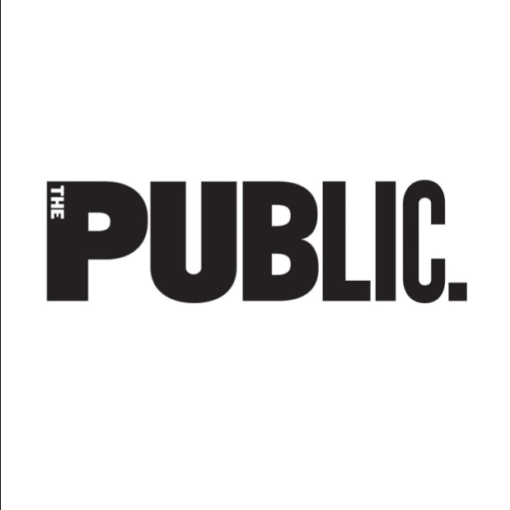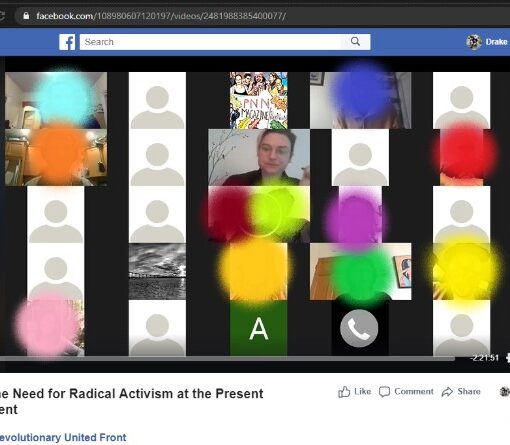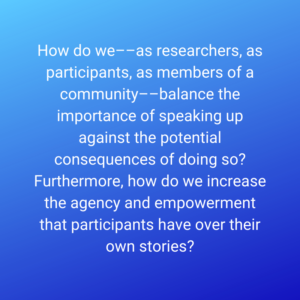 It is often the case that violence against marginalized people is reinforced through the silencing of their stories, so that oppression cannot be named, let alone challenged. But as a researcher who utilizes oral history methods, I have to think carefully about the risks that my participants are taking in choosing to share their stories on a digital platform where they have little control over how stories are received and shared. How do we––as researchers, as participants, as members of a community––balance the importance of speaking up against the potential consequences of doing so? Furthermore, how do we increase the agency and empowerment that participants have over their own stories?
It is often the case that violence against marginalized people is reinforced through the silencing of their stories, so that oppression cannot be named, let alone challenged. But as a researcher who utilizes oral history methods, I have to think carefully about the risks that my participants are taking in choosing to share their stories on a digital platform where they have little control over how stories are received and shared. How do we––as researchers, as participants, as members of a community––balance the importance of speaking up against the potential consequences of doing so? Furthermore, how do we increase the agency and empowerment that participants have over their own stories?
For my dissertation, I partnered with a gender justice organization I have worked with for the past five years to design a project combining elements of participatory action research (PAR) with oral history and digital archiving. One of the foundations of PAR is the idea that no research should be done without the involvement of community members. I was interested in how the stories that Indo-Caribbean women and gender non-conforming (GNC) people tell challenge dominant narratives about resistance to historical oppression, and in particular those narratives that portray women as passive and non-confrontational and fail to represent GNC people at all.
To explore this question, we designed a three-part oral history project where community members were trained in oral history methods and invited to conduct interviews of one another. In the second stage of the research, other community members were invited to join the project to co-create a digital archive of the stories collected and engage in a reflective process about questions of access, privacy, and accountability. As a member of the community I conduct research with, it was important to me to participate in the project myself; I completed an oral history interview and was a member of the group of co-authors who worked on the creation of the digital archive.
While participants shared an understanding of the importance of breaking silences in their community, they were immediately faced with the potential consequences of speaking out when met with the choice to archive their stories. My fellow co-authors and I spoke in-depth about our responsibility to protect participants; after several meetings, we decided that we would require all participants to submit their stories anonymously. We came to this decision because we wanted participants to feel safe to speak their truths and free to break silences around taboo subjects. We also wanted to protect them from any negative reactions they might face from people both within the community and outside of it.
Before each interview, I went over the consent forms with each participant and invited them to ask any questions or share any concerns they had. In the consent form, p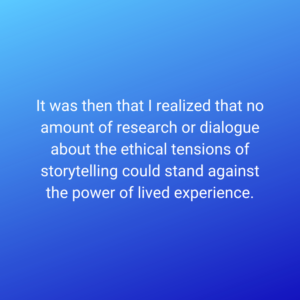 articipants were asked to list their preferred pseudonym. I expected that participants hadn’t previously thought about the possible risks of sharing their stories in a digital archive, and that by requiring them to choose a pseudonym, I was protecting them.
articipants were asked to list their preferred pseudonym. I expected that participants hadn’t previously thought about the possible risks of sharing their stories in a digital archive, and that by requiring them to choose a pseudonym, I was protecting them.
However, this was not always the case. One participant, Karen, surprised me by insisting on using her full name rather than a pseudonym. She shared that because so many of the stories from the past are anonymized, she wants future generations to be able to search for her story, identify that it’s hers, and be able to claim it as part of their lineage.
It was then that I realized that no amount of research or dialogue about the ethical tensions of storytelling could stand against the power of lived experience. As a researcher, my role was to empower participants to tell their stories the way they wanted them told—and by creating a standard for all participants to adhere to, I had moved away from that commitment. Karen’s insistence on using her name brought me back to the key values that grounded my project. I was trying to protect her, and in doing so, I silenced her.
To honor the varying levels at which participants might feel empowered or disempowered by anonymity, we gave participants the option to use their names or pseudonyms. In the end, all but two chose for their stories to remain anonymous for inclusion in the digital archive, but offering participants the choice became an important part of our methodology. Such variations are often hard for researchers who want to standardize each aspect of the research process, ensure uniformity, and control variables, but as I came to learn, it is necessary for community-engaged research. It is only through deep collaboration and a commitment to centering participants’ own agency and desires that we can resist systems of violence in our research.
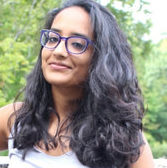 Arita Balaram is a PhD student in the Critical Social/Personality Psychology program at The Graduate Center, CUNY. She is interested in stories that circulate within diasporic communities, across migratory geographies, and through generations. Her past research has integrated visual methodologies such as identity mapping to explore how Indo-Caribbean youth in the U.S. engage in acts of self-assertion and recovery in contexts where ideas of home, belonging, and community have been contested for generations. More broadly, she is interested in the utility of psychological theory for doing community-building and healing work.
Arita Balaram is a PhD student in the Critical Social/Personality Psychology program at The Graduate Center, CUNY. She is interested in stories that circulate within diasporic communities, across migratory geographies, and through generations. Her past research has integrated visual methodologies such as identity mapping to explore how Indo-Caribbean youth in the U.S. engage in acts of self-assertion and recovery in contexts where ideas of home, belonging, and community have been contested for generations. More broadly, she is interested in the utility of psychological theory for doing community-building and healing work.


